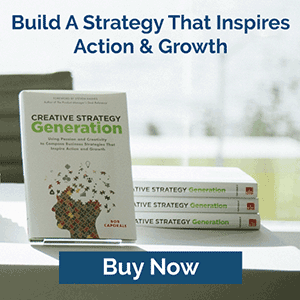Dear Strategy:
“What is the best way to revitalize a product line that is operating in a mature or declining market?”
As much as I hate when people do this to me, I’m afraid I’m going to have answer this question by asking another. That is, are you sure that you really want to revitalize your product in the first place?
The reason we need to put this question on the table right up front is because there seems to be a pervasive corporate culture that demands growth out of every single product line, regardless of where that product is in its lifecycle. Now, don’t get me wrong, I understand the dynamic here. Companies need to grow, and so it is only natural that this overall growth objective will be translated down throughout the organization to a product line level – either by executives, by product leaders, or by both. And, so, the latter part of a product lifecycle (that is, everything from maturity through exit) somehow conveniently gets ignored.
But that part of a product’s lifecycle shouldn’t be ignored. In fact, it can’t be, because it will happen whether you like it or not. That’s not to say that you can’t do anything about it in the grander scheme of things – but hanging on to your product for dear life is usually not one of your better options.
The way I see it, there are three main things that you can do once a product has entered maturity in any given market:
- You can revamp the product and try to squeeze some more life out of it
- You can manage its decline and replace it with something else
- You can manage its decline and exit from the market altogether
Taking these one at a time, if you go the first route (which seems to be the core of the original question), you need to make sure that you’re going back to the market and addressing some pain point that your customers have. That pain point can be either stated or implied, but, either way, you need to be sure that any revitalization effort focuses on what your customers want to buy, rather than on what you want to provide.
One of the most common ways to revitalize a product line, especially in the consumer space, is through the introduction of what are typically called “line extensions.” A good example of this can be seen with the Ivory soap brand. This is a product that is well over 100 years old – so clearly on the other side of its maturity curve. But at some point in the history of that brand, Proctor & Gamble decided to extend the line into products like liquid soap, dish soap, and even a skin care bar. These were clearly variations on the basic Ivory soap product, but designed for the needs of a more modern marketplace. And, so, with those introductions, new life was given to an otherwise (assumably) declining lifecycle curve.
In the business to business space, revitalization may look somewhat different, with a focus on adding new technologies or interfaces to existing products. So an industrial product might be updated with a new digital control or a new software interface. But, again, companies need to be careful to do this in response to determined customer needs, lest they risk updating a product without reaping any benefit from that investment.
Even though the original question focused mostly on Option 1, we don’t want to discount the other two options as being very viable as well when one of your products is in decline within any given marketplace. Unfortunately, exiting a product is not always a top of mind choice for companies because, as I stated earlier, there is an overwhelming bias toward ensuring that every product line will always be growing on its own. However, products will and do decline, whether you like it or not. And, that being the case, knowing when to throw in the towel on your product is a very important part of any product manager’s decision-making process.
Why? Because planning for your own demise is a heck of a lot better than letting someone else plan your future for you. Whether that means simply preparing your customers for exit or bringing those customers over to some new product – either of these scenarios are better than surprising your customers with some unplanned event and leaving them to figure things out on their own.
So, summing this all up, you need to listen to your customers and then respond accordingly. Maybe that will involve revitalization; maybe that will involve replacement; or maybe that will involve helping them find another solution altogether. But before you choose any of these options for your customers, just make sure you’re hearing them first.
Listen to the podcast episode
Dear Strategy: Episode 052

###
Bob Caporale is the founder of Strategy Generation Company, the author of Creative Strategy Generation and the host of the Dear Strategy podcast. You can learn more about his work by visiting bobcaporale.com.






